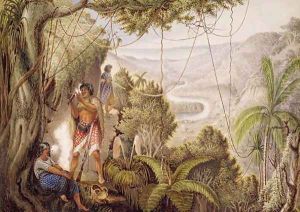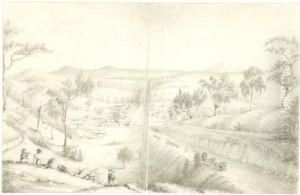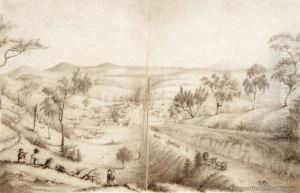Gustavus Ferdinand von Tempsky Paintings
Gustavus Ferdinand von Tempsky, born in Braunsberg, Prussia (now Braniewo, Poland), on February 15, 1828, was not primarily known as an artist but as a soldier, adventurer, and writer. His life was marked by his involvement in various military campaigns across the globe, but throughout his adventures, he also developed a talent for watercolor painting, capturing scenes from his extensive travels and various engagements.
Tempsky embarked on his adventurous lifestyle at a young age. He left home at the age of seventeen and traveled to Central America, where he found work in the mines of Mexico. His life took a martial turn when he became involved in the military activities in the region, fighting in the civil wars in Guatemala and El Salvador in the 1850s. During these years, Tempsky also started to create sketches and paintings of the landscapes and people he encountered, documenting his experiences and surroundings.
After leaving Central America, Tempsky moved to California during the Gold Rush before eventually sailing to Australia and then to New Zealand in the early 1860s. In New Zealand, he joined the British colonial forces in their campaigns against the Māori, becoming a prominent figure in the New Zealand Wars. He led a unit known as the Forest Rangers and became known for his fearless leadership. It was during this period that he continued to paint, his works providing an important historical record of the conflicts and the times.
Tempsky was killed in action on September 7, 1868, during the assault on Te Ngutu o Te Manu pā in the Taranaki region of New Zealand. His death was widely mourned, and he was remembered as a charismatic and daring leader.
Although Tempsky's primary legacy is that of a soldier and adventurer, his artistic contributions have been recognized posthumously. His watercolors and sketches offer a unique perspective on the tumultuous periods he lived through, and they have been valued both for their historical significance and their artistic merit. His works are held in several collections, including those of museums in New Zealand, where they continue to be of interest to both art historians and those studying the colonial history of the region.


